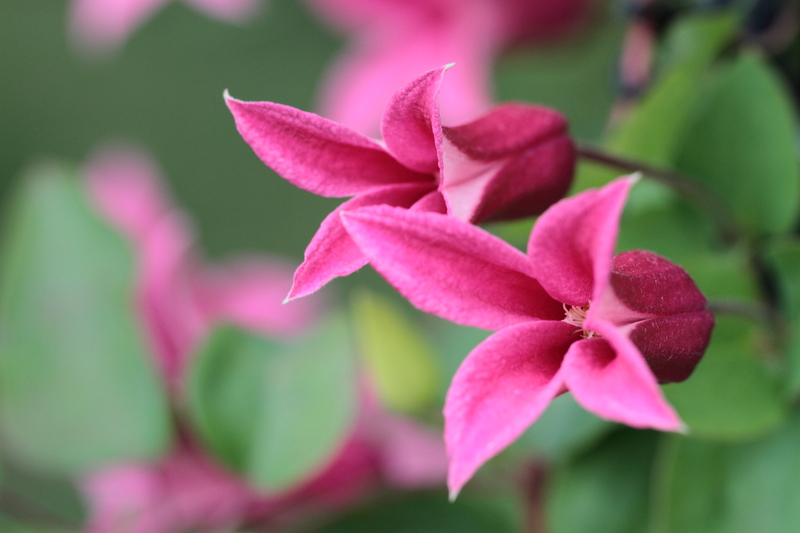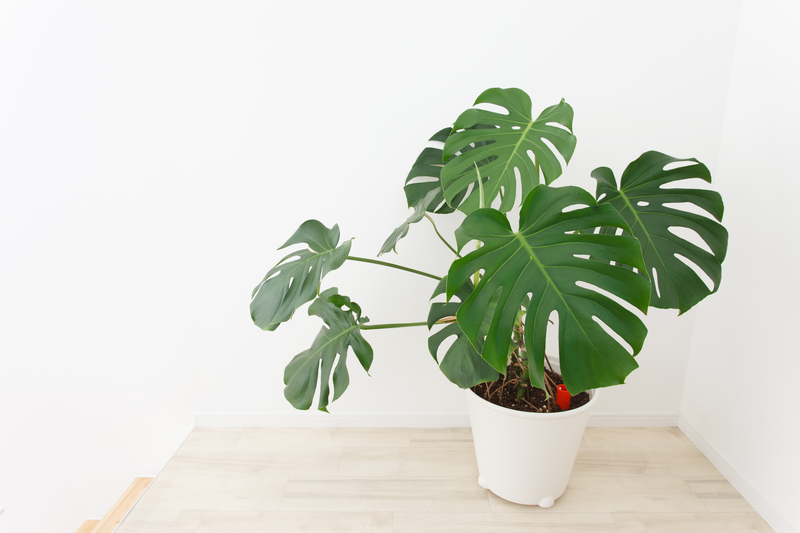Making an Outdoor Oasis for Children and Nature
Posted on 21/06/2025
Making an Outdoor Oasis for Children and Nature
Creating an outdoor oasis for children and nature is a rewarding project that brings families closer and fosters a lifelong love for the environment. By designing a dedicated space where kids can safely play, explore, and connect with the natural world, you stimulate imagination, enhance learning, and improve well-being.
Why an Outdoor Oasis for Kids and Nature?
Children today spend less time outdoors than any previous generation. With the lure of screens and packed schedules, it's more important than ever to intentionally create spaces that reconnect them with nature. A nature-inspired outdoor haven offers a multitude of benefits:
- Physical development: Climbing, running, digging, and exploring build endurance and coordination.
- Mental health: Nature calms anxiety, lifts mood, and reduces stress.
- Cognitive growth: Outdoor play sparks creativity, problem-solving, and curiosity.
- Social skills: Shared play and collaboration encourage empathy and cooperation.
- Environmental awareness: Firsthand encounters with plants and creatures foster stewardship and respect for Earth.

Steps to Creating an Outdoor Paradise for Children
1. Assess Your Space and Set Goals
Start by examining your yard, patio, or shared outdoor area. Think about the ages, interests, and needs of the children who will use the space. Do you want to encourage physical activity, quiet nature observation, arts and crafts, or edible gardening? Make a list of your priorities--these decisions will guide your design.
- Size and shape: Identify the sunniest and shadiest spots.
- Safety first: Check for hazards (pools, sharp tools, poisonous plants).
- Accessibility: Consider paths for strollers, wheelchairs, or uneven ground.
- Community: Is this a private space or shared with neighbors or a school?
2. Design with Nature in Mind
An outdoor oasis for children and nature should feel harmonious with the environment. Take inspiration from natural ecosystems:
- Native plants: Choose species that thrive locally and attract pollinators.
- Nature play features: Logs, boulders, sand, or water for open-ended play.
- Wildlife habitats: Birdhouses, butterfly gardens, and bee hotels invite living guests.
- Loose parts: Sticks, pinecones, shells, and stones for imaginative construction.
- Mini-habitats: Ponds, rock piles, or wildflower patches nurture biodiversity.
Plan your layout in zones: active, creative, quiet, and nature spaces.
3. Prioritize Safety & Accessibility
Safety is essential when making any kids' outdoor retreat. Select non-toxic plants and avoid materials that splinter, rust, or overheat in the sun.
- Fencing: Secure perimeters in yards close to traffic or water.
- Soft ground cover: Use bark mulch, grass, or soft pea gravel to cushion falls.
- Shade: Install shade sails, trees, or pergolas to protect from sunburn.
- Visibility: Arrange features so supervising adults have clear sightlines.
- All ages: Add ramps, handrails, or sensory paths so everyone can participate.
4. Blend Play and Calm: Outdoor Activity & Discovery Zones
Dynamic, nature-inspired activity spots keep children engaged. Mix elements that invite active play with areas for quiet contemplation. Here are zones you can incorporate:
- Physical play: Balance beams, low climbing walls, tree stumps for hopping, and a grassy mound for rolling.
- Sand and water: Offer a water table, stream bed, or mud kitchen for sensory play.
- Imagination: Build a willow den, "fairy garden," or themed fort from branches.
- Gardening: Raised beds or pots for vegetables, herbs, and flowers with child-sized tools.
- Observation corner: Binoculars, log seats, or a hide for watching birds and bugs.
- Art & music: Outdoor chalkboards, easels, or musical walls from recycled materials.
5. Cultivate Stewardship & Wonder
One aim of making an outdoor oasis for children and nature is instilling respect and curiosity about the living world. Encourage:
- Participation: Let children help select plants, spread seeds, and care for the garden.
- Wildlife observation: Provide guides and magnifiers for bug hunts.
- Eco-projects: Composting, rainwater harvesting, or building bug hotels.
- Seasonal celebrations: Mark nature's cycles: planting day, butterfly releases, or harvest feasts.
Key Features of a Family-Friendly Outdoor Oasis
Natural Play Structures
Traditional plastic slides and swings are fun but nature-based structures blend beauty with adventure. Use logs for balancing, tree slices for stepping stones, or earth mounds for climbing over. Willow tunnels, bamboo teepees, or woven forts make magical hideaways.
Pockets of Wildlife Habitat
A child and nature haven should attract butterflies, bees, birds, and small mammals. Plant native flowers, create brush piles, or make a little pond for frogs. Hang birdhouses or install a bee hotel to watch pollinators up close.
Edible Garden Beds
Growing food teaches children self-reliance and where their meals come from. Designate a special bed or container just for kids--they can start with easy crops like cherry tomatoes, strawberries, snap peas, or sunflowers. Eating garden-fresh produce is delicious and empowering!
Quiet Zones: Nooks for Reading & Rest
Create a peaceful retreat for downtime within your children's outdoor sanctuary. A hammock, hanging chair, or bean bags under a shady tree make perfect reading spots. Install a wind chime, hang lanterns, and encourage cloud-watching or quiet time.
Sensory Paths & Tactile Exploration
Nature is multisensory-- design paths that encourage barefoot discovery. Alternate stepping stones, soft grass, smooth pebbles, and bark chips. Include fragrant herbs (like lavender and mint), fuzzy lamb's ear, and bright flowers for kids to smell and touch.
Weather Awareness & Seasonal Changes
Help kids observe weather and seasons. Add a wind sock or homemade weather station. Plant a tree and take photos at the same spot each season. Keep a journal or drawing pad to sketch changes in your oasis throughout the year.
Accessible Storage and Tool Stations
Easy-to-reach bins and shelves encourage independence. Kids can put away outdoor art supplies, gardening gloves, or nature treasures they collect. Having child-friendly tools and mud-resistant aprons makes engaging in nature activities more inviting.
Eco-Friendly Tips for Your Backyard Nature Playground
Making your backyard children's paradise sustainable builds green habits for life:
- Choose durable, non-toxic, locally-sourced materials where possible.
- Mulch garden beds and use rain barrels to conserve water.
- Incorporate recycled elements: pallets for planters, tires for swings, or old pots for habitats.
- Leave wild corners--let some grass grow tall or pile sticks for beetles and birds.
- Limit pesticides: Encourage natural pest control with birds and beneficial bugs.
- Compost food waste or garden trimmings to close the loop.
Involving Kids in the Outdoor Oasis Creation
Children's engagement and sense of ownership grow when they help shape their nature play area. Ask for input at every step:
- Design brainstorms: What features do they love--water, digging, climbing, or art?
- Building projects: Let kids assist with painting signs, digging, or constructing simple forts.
- Gardening tasks: Assign age-appropriate responsibilities--watering, picking ripe veggies, or weeding.
- Theme days: Plan eco-adventures, scavenger hunts, or bug safaris.
- Celebrations: Throw a "grand opening" garden party or picnic to inaugurate the new oasis!
Troubleshooting Common Challenges
Small Spaces
Lack of a big yard doesn't mean missing out! Urban courtyards, balconies, or even shared apartment green spaces can become vibrant kids' oases.
- Use vertical planters or wall gardens for growing flowers and herbs.
- Install portable sand/water tables--move them outdoors only when in use.
- Create nature trays: rotate trays filled with stones, leaves, and small branches for sensory play.
- Grow butterfly-friendly plants in large pots or window boxes.
- Involve neighbors: Team up for shared green space improvements or playdate rotations.
Bugs, Weeds, & Maintenance
- Teach children the difference between helpful insects and pests.
- Mulch effectively to suppress weeds and retain soil moisture.
- Involve kids in cleanup tasks: make it a game (who can collect more sticks or leaves?).
- Choose low-maintenance, drought-resistant plants to minimize chores.
Changing Seasons
- Winter doesn't have to end nature play!
- Add evergreens and hardy shrubs for year-round color.
- Install a bird-feeder station to observe wildlife in cold months.
- Create an all-weather shelter--like a tarp teepee or covered reading nook.
- Switch play features seasonally: snow-painting or autumn leaf piles are just as fun!

Long-Term Enrichment: Growing with Your Children's Oasis
As your kids get older, their interests and abilities will evolve. Your outdoor environment can mature alongside them:
- Expand gardening plots or try new crops.
- Add a woodwork table, archery targets, or nature journal station.
- Host outdoor movie nights, science experiments, or mural painting sessions.
- Invite friends or neighbors for larger eco-projects--creating trails, building bird blinds, or organizing wildlife counts.
*The heart of an outdoor oasis for children and nature is adaptability: let your space change and grow with your family's passions!*
Conclusion: Sowing Seeds for a Greener Future
By building an oasis where children and nature thrive together, you enrich childhood, foster discovery, and nurture tomorrow's environmental stewards. Even a tiny green corner can become a beloved adventure zone.
- Start small-- one sensory path, wildflower bed, or DIY bug hotel makes a difference.
- Let children lead--their enthusiasm is your most valuable design tool.
- Enjoy the journey--delight in every butterfly, muddy handprint, and proud garden harvest!
With creativity and care, you can transform any outdoor area into a nature-rich play paradise--building healthy, joyful memories for your family and friends and championing a lifelong relationship with the living earth.

